Showing Spotlights 81 - 88 of 547 in category All (newest first):
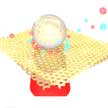 Researchers demonstrate label-free chiral detection of metabolic molecules at picomolar level through microbubble-induced rapid accumulation of biomolecules on plasmonic chiral sensors, which shows a 10-million times enhancement in sensitivity comparing to state-of-the-art plasmonic chiral sensors. The researchers achieved their ultrahigh sensitivity in chiral sensing of biomolecules by utilizing two enhancement mechanisms: the microbubble-induced accumulation of biomolecules onto the chiral plasmonic substrates; and the subsequent plasmon-enhanced chiral sensing.
Researchers demonstrate label-free chiral detection of metabolic molecules at picomolar level through microbubble-induced rapid accumulation of biomolecules on plasmonic chiral sensors, which shows a 10-million times enhancement in sensitivity comparing to state-of-the-art plasmonic chiral sensors. The researchers achieved their ultrahigh sensitivity in chiral sensing of biomolecules by utilizing two enhancement mechanisms: the microbubble-induced accumulation of biomolecules onto the chiral plasmonic substrates; and the subsequent plasmon-enhanced chiral sensing.
Mar 30th, 2021
 Researchers achieved a milestone in exploring biology using nanotechnology utilizing single-particle tracking to investigate the interaction between human T cells and individual fluorescent nanoparticles of semiconductor quantum dots (QDs). The researchers were able to deliver QDs into the cytosol of live T cells by decorating the nanoparticles with a unique cell-penetrating peptide. The study paves the way for improving drug delivery and immunotherapy using novel nanocarriers.
Researchers achieved a milestone in exploring biology using nanotechnology utilizing single-particle tracking to investigate the interaction between human T cells and individual fluorescent nanoparticles of semiconductor quantum dots (QDs). The researchers were able to deliver QDs into the cytosol of live T cells by decorating the nanoparticles with a unique cell-penetrating peptide. The study paves the way for improving drug delivery and immunotherapy using novel nanocarriers.
Mar 12th, 2021
 In another step towards engineered living materials, researchers combined living bacteria and 3D-printed materials to grow bionic mineralized composites with ordered microstructures. It provides an example of harnessing living bacteria to design self-growing materials and opens the door for a new class of engineering materials that can self-grow like living creatures. This manufacturing strategy can be easily extended by selectively controlling the activity of living organisms to synthesize unprecedented structural composites with ordered, hierarchical, and gradient microstructures.
In another step towards engineered living materials, researchers combined living bacteria and 3D-printed materials to grow bionic mineralized composites with ordered microstructures. It provides an example of harnessing living bacteria to design self-growing materials and opens the door for a new class of engineering materials that can self-grow like living creatures. This manufacturing strategy can be easily extended by selectively controlling the activity of living organisms to synthesize unprecedented structural composites with ordered, hierarchical, and gradient microstructures.
Feb 23rd, 2021
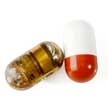 A major challenge in the development of implantable and ingestible biomedical electronic devices is the limited lifetime of their power sources. The energy requirements of these devices are highly dependent on their application and the complexity of the required electrical systems. The power unit, which is composed of one or more energy sources - batteries, energy-harvesting, and energy transfer - as well as power management circuits, supplies electrical energy to the whole system.
A major challenge in the development of implantable and ingestible biomedical electronic devices is the limited lifetime of their power sources. The energy requirements of these devices are highly dependent on their application and the complexity of the required electrical systems. The power unit, which is composed of one or more energy sources - batteries, energy-harvesting, and energy transfer - as well as power management circuits, supplies electrical energy to the whole system.
Feb 16th, 2021
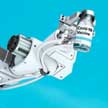 Rather than growing vaccines in bioreactors, a new generation of biotechnology companies designs instructions that the body then can use to produce its own therapy. These novel vaccines exploit the process by which cells build proteins from the information encoded in a single-stranded molecule called messenger RNA (mRNA). They are enabled by the revolutionary nature of new industrialized biotechnology platforms that exploit breakthroughs in biological engineering and artificial intelligence.
Rather than growing vaccines in bioreactors, a new generation of biotechnology companies designs instructions that the body then can use to produce its own therapy. These novel vaccines exploit the process by which cells build proteins from the information encoded in a single-stranded molecule called messenger RNA (mRNA). They are enabled by the revolutionary nature of new industrialized biotechnology platforms that exploit breakthroughs in biological engineering and artificial intelligence.
Jan 28th, 2021
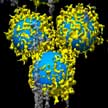 Scientists developed a new method to better understand how nanomedicines interact with patients' biomolecules. When nanoparticles enter human blood, they come into immediate contact with various biomolecules. These biomolecules form a coating layer on the nanoparticle surface - the so-called biomolecular corona - thereby imparting a unique biological identity to the nanoparticle, which could be very different from the pristine nanoparticle surface.
Scientists developed a new method to better understand how nanomedicines interact with patients' biomolecules. When nanoparticles enter human blood, they come into immediate contact with various biomolecules. These biomolecules form a coating layer on the nanoparticle surface - the so-called biomolecular corona - thereby imparting a unique biological identity to the nanoparticle, which could be very different from the pristine nanoparticle surface.
Jan 25th, 2021
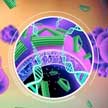 Back in the spring of 2015, one of our Nanowerk Spotlights asked the question: 'Has nanomedicine lived up to its promise?' The answer then was that, judging by research activity and funding, the field of nanomedicine has been very fertile; however, by using the yardstick of clinical success and paradigm shifts in treatment, the results appear quite a bit more modest. So here we are, at the end of 2020, and the answer to that same question still is inconclusive. To address this problem, researchers now propose the creation of new nanomedicine design criteria.
Back in the spring of 2015, one of our Nanowerk Spotlights asked the question: 'Has nanomedicine lived up to its promise?' The answer then was that, judging by research activity and funding, the field of nanomedicine has been very fertile; however, by using the yardstick of clinical success and paradigm shifts in treatment, the results appear quite a bit more modest. So here we are, at the end of 2020, and the answer to that same question still is inconclusive. To address this problem, researchers now propose the creation of new nanomedicine design criteria.
Dec 14th, 2020
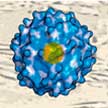 With their ability to resist conventional chemotherapy drugs, cancer stem cells (CSC) are really difficult to kill, and they are considered to be key drivers in metastasis, the spread of cancer via the blood stream. If the frequency of CSCs could be diminished, tumors would be rendered less aggressive and more responsive to conventional therapy. This approach is known as differentiation therapy and has considerable therapeutic potential. Scientists now report an approach capable of efficient differentiation of CSCs into non-CSC phenotypes.
With their ability to resist conventional chemotherapy drugs, cancer stem cells (CSC) are really difficult to kill, and they are considered to be key drivers in metastasis, the spread of cancer via the blood stream. If the frequency of CSCs could be diminished, tumors would be rendered less aggressive and more responsive to conventional therapy. This approach is known as differentiation therapy and has considerable therapeutic potential. Scientists now report an approach capable of efficient differentiation of CSCs into non-CSC phenotypes.
Nov 10th, 2020
 Researchers demonstrate label-free chiral detection of metabolic molecules at picomolar level through microbubble-induced rapid accumulation of biomolecules on plasmonic chiral sensors, which shows a 10-million times enhancement in sensitivity comparing to state-of-the-art plasmonic chiral sensors. The researchers achieved their ultrahigh sensitivity in chiral sensing of biomolecules by utilizing two enhancement mechanisms: the microbubble-induced accumulation of biomolecules onto the chiral plasmonic substrates; and the subsequent plasmon-enhanced chiral sensing.
Researchers demonstrate label-free chiral detection of metabolic molecules at picomolar level through microbubble-induced rapid accumulation of biomolecules on plasmonic chiral sensors, which shows a 10-million times enhancement in sensitivity comparing to state-of-the-art plasmonic chiral sensors. The researchers achieved their ultrahigh sensitivity in chiral sensing of biomolecules by utilizing two enhancement mechanisms: the microbubble-induced accumulation of biomolecules onto the chiral plasmonic substrates; and the subsequent plasmon-enhanced chiral sensing.
 Subscribe to our Nanotechnology Spotlight feed
Subscribe to our Nanotechnology Spotlight feed





